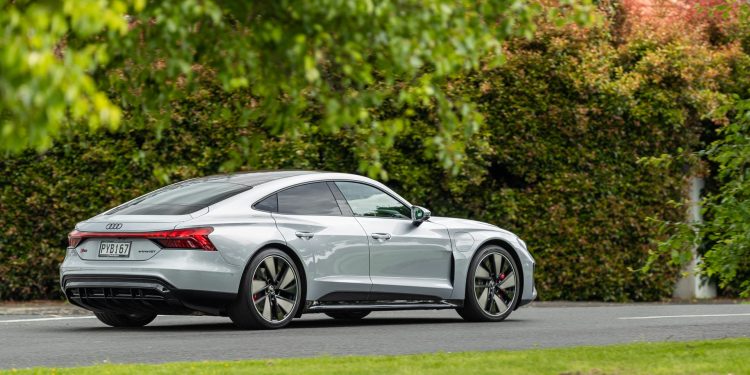2023 Audi RS e-tron GT Review
Words: Kyle Cassidy | Photos: Isaac Western
The RS e-tron GT is still Audi’s top electric performer. We get reacquainted with its exclusive blend of performance and luxury.
The other day I was sitting roadside pondering life when I heard the rumble of what sounded like a powerful machine rolling up.
Colour me surprised then when I looked up to see it was an Audi RS e-tron GT making the powerful clamour. Or faking it, rather, given it’s the all-electric halo model of the brand.

The RS has external speakers front and rear emitting ‘a sophisticated and emotional sound experience’.
Talk about deceiving but the mild disappointment of being duped by a synthesizer was quickly replaced by admiration for those sleek lines. It might not be new per se, having been released in 2021, but it still looks like a concept car on the loose.
The RS GT might be looked upon as the alternative top performer from Audi, given the R8 still has a little life left in its tenure, and there’s the Audi RS 6 Avant which Kiwis are still hooked on.
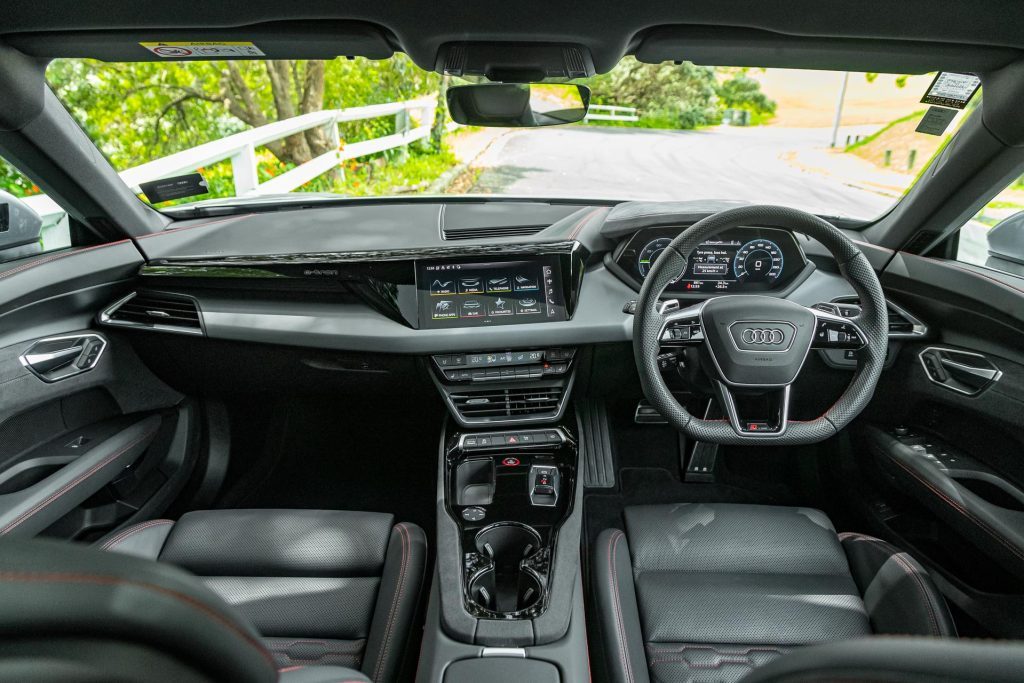
The super wagon is now in its Performance guise, meaning the $242,990 Avant comes with 463kW and 850Nm and still with that demonic soundtrack.
It still hoovers the juice too, premium at that, while at best emitting 311g of CO2 per km. That’s 4.66 tonnes a year.
Still want the RS performance but with a vastly reduced local emissions profile? Emphasis there on local.
We know EVs consume more resources in production, but they reduce local air pollution and here, where you’re likely to use renewables to recharge, that overall emissions profile will be far less over a life cycle.
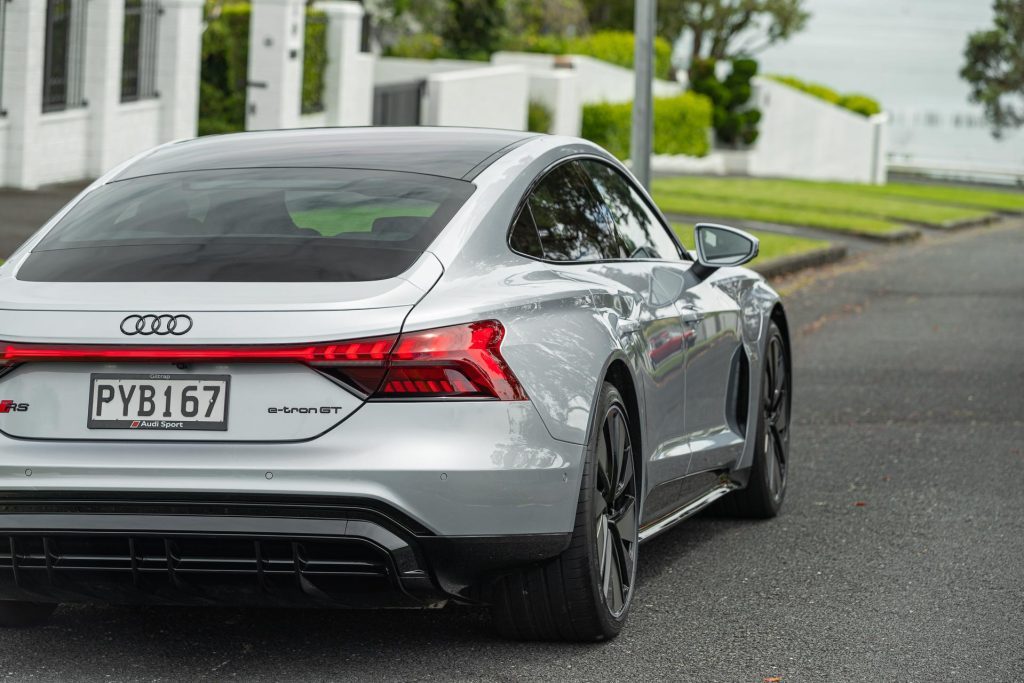
Anyhow, the RS e-tron GT can scamper to 100km/h just as quickly as the RS 6 (actually a step quicker given when we tested it, the RS hit 100 in 3.11sec), and as we re-discovered, it is a rather pampering machine in other respects.
While it’s a sexy sports machine, it’s also one with a dose of practicality. It’s a four-door after all, but it disguises this fact well with its sleek, coupe-like profile.
Yes, it’s no SUV when it comes to entering and alighting, and while the low slung roofline might challenge those with a dodgy hip, it’s not a huge chore given there’s no chunky sill to negotiate and the sports seats are accommodating too.
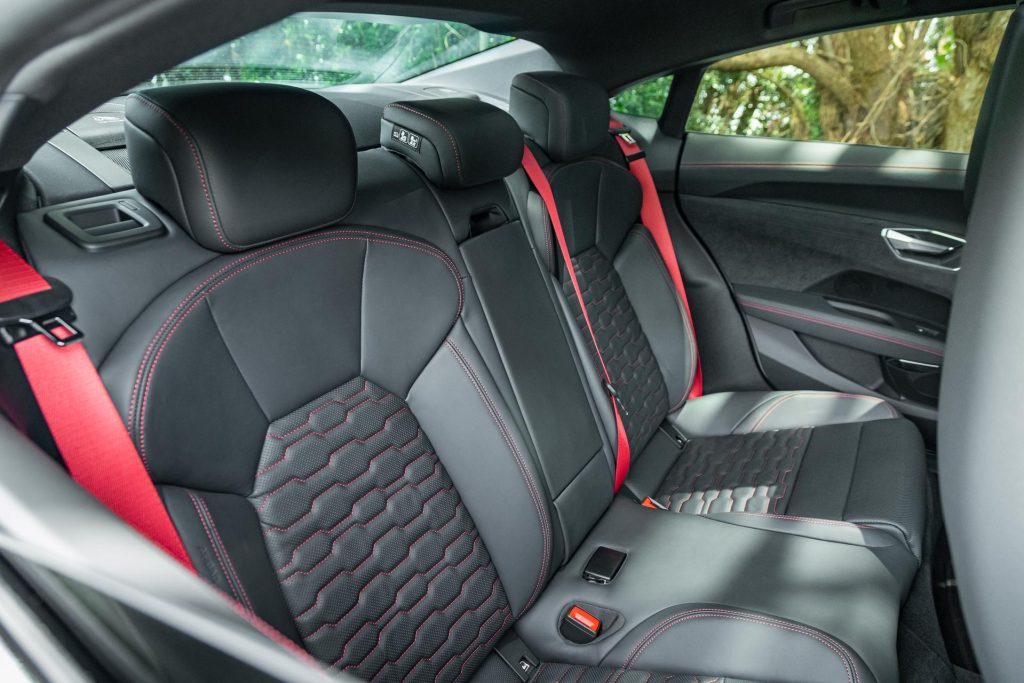
It’s a genuine four seater (there’s a perch for the very occasional third person in the rear) with good head and leg room out back, given they made an indent in the battery pack to allow for additional footwell space.
While the opening is a bit mean, the boot is okay too, long and wide, the 350L offered will be plenty for most. And there’s split folding for the ski trips.
The RS GT has a big battery with a 93kWh capacity (85kWh usable). Audi says power consumption is between 20 and 22.5kWh/100km, stating a range of up to 472km.
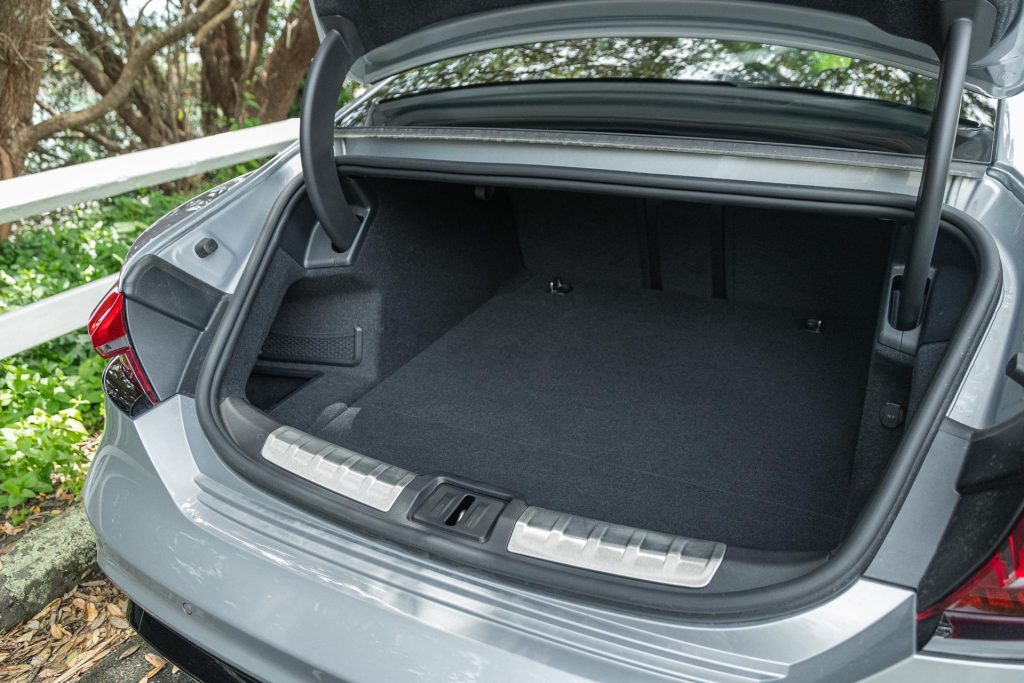
But trying not to binge too excessively on that power is the hard part. This particular RS we picked up after it had been part of a track day experience, and so the distance to empty was showing just 280km.
But then these estimates are based on previous driver behaviour, with the energy consumption figures of this machine being sky high in the mid 40s! A real world range of around 400km is suggested by reputable overseas websites.
That’ll get you places and, with its 800V electrical architecture, it can take on DC charge rates of up to 268kW. So find yourself at a 300kW hyper charger and a top up from 10-80 per cent can take as little as 17 minutes.
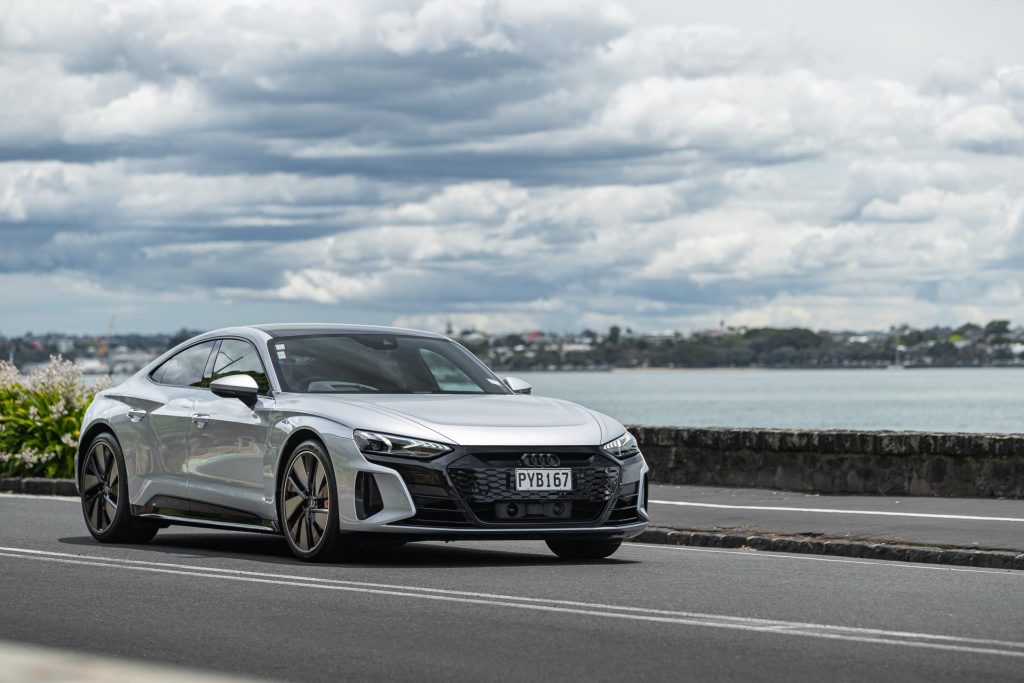
Just a pity those are still scarce, particularly in the South Island. The RS also comes with a more powerful 22kW AC on board charger, so get yourself a grunty wallbox (3 phase 32A) and you can get a full charge in just under five hours, or add around 85km of range in an hour.
The RS GT is equipped with air springs, giving it a dual personality. In the Comfort mode it’s rather pampering and quite relaxing for something so sporty. It’s low in the ride stakes, but a quick press of a button and it can rise up to tackle driveways and the like.
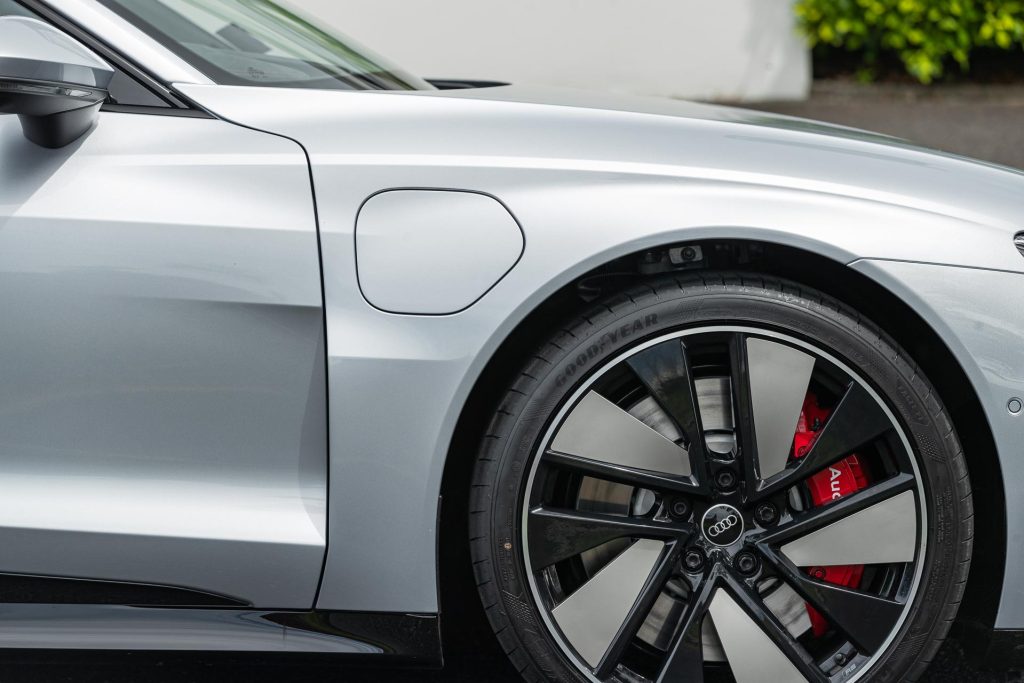
All very civilised really. The steering is easy too, quick between the stops and with the rear wheels helping, this turns around like a small hatch.
We like how the parking sensors also guard the wheels from kerb damage, sounding off if you get a bit close to the basalt when parallel parking.
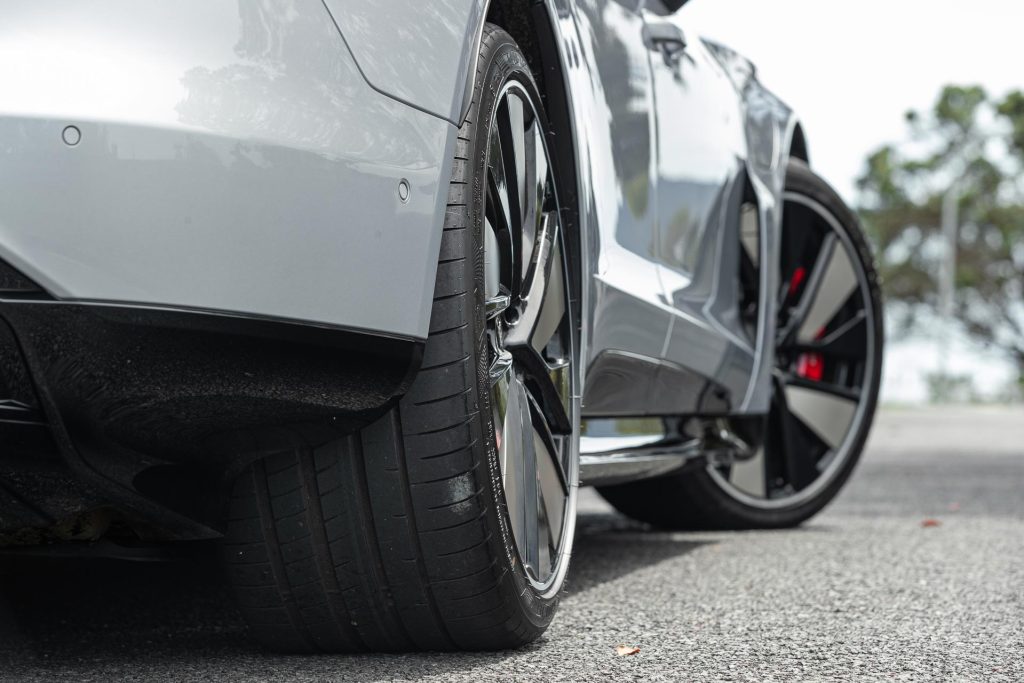
For a low slung machine, the outward vision is good, with useful side mirrors while the surround view camera does the rest.
It’s not overly digital in the cabin, some buttons helping sort ventilation for instance, while other functions are taken care of via the responsive and vibrant screen, which has you covered for connectivity too.
The wireless charge pad is concealed in the centre bin which, like the rest of the cabin storage, is on the tight side, as are the cup holders (though good enough for your caffeine fix). The safety minders are all well behaved, while the active cruise comes with traffic sorting abilities too.
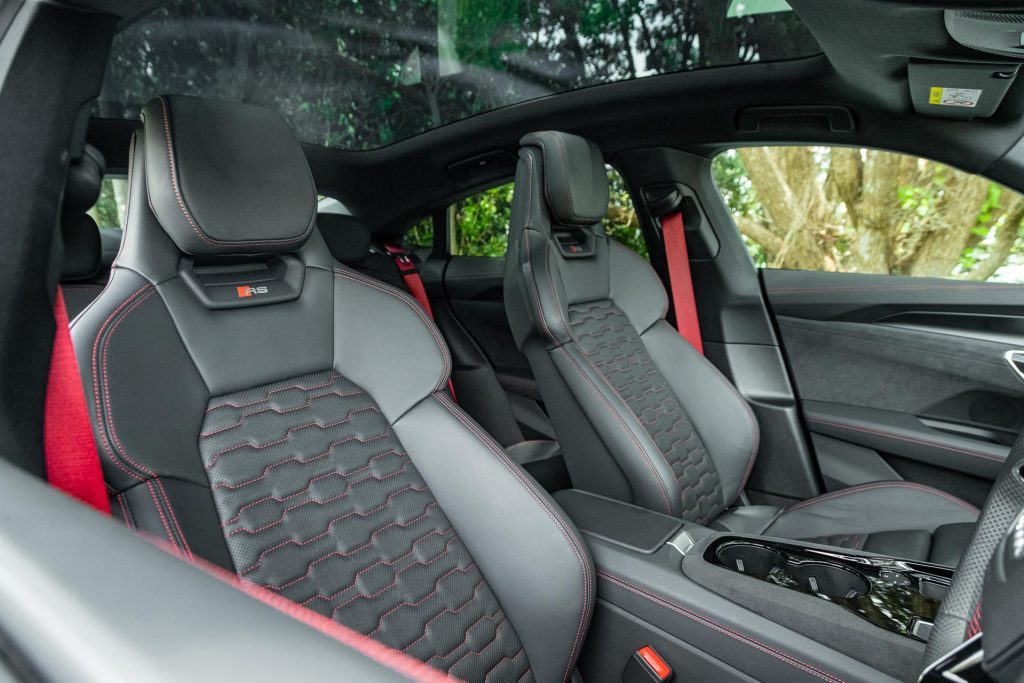
The RS GT boasts 440kW of power (a full throttle boosting function permits a maximum of 475kW for short bursts) and some 830Nm of twisting strength.
With that much at your immediate disposal, there’s nothing that can beat the punch of an uber powerful dual-motor electric car.
There are no transmission cogs to sort, no waiting for turbos to spool, you just mash the throttle and it smashes unsuspecting passengers’ heads into their seats. It’s relentless.
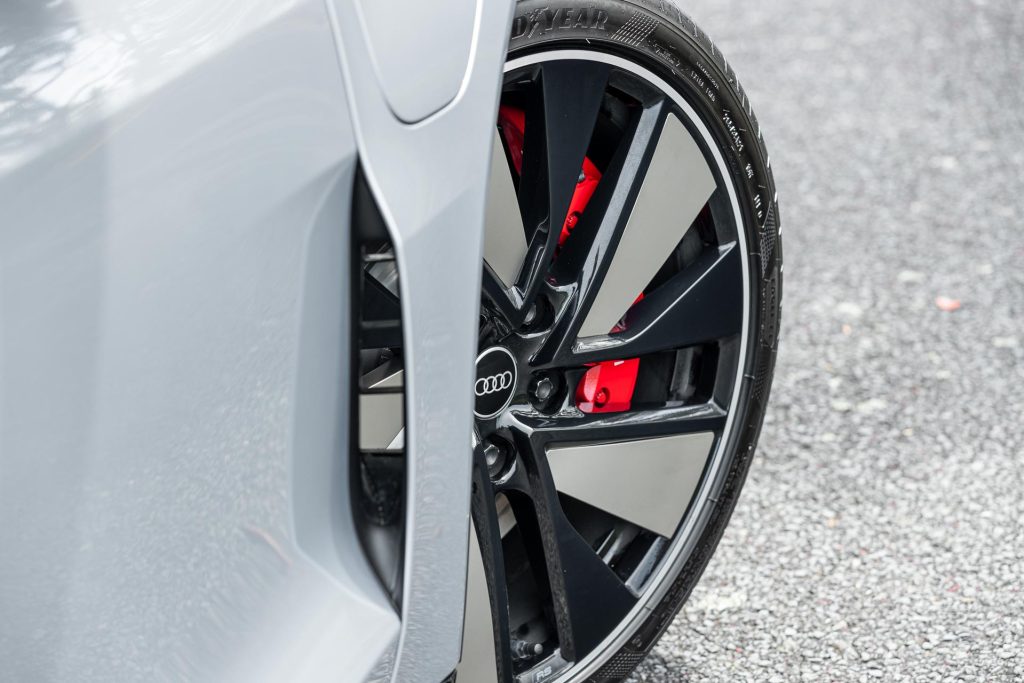
Concerned that your electric RS might run out of pace at the track? This has a two-speed transmission, the second gear engaging at higher speeds, enabling this EV a greater top speed than the normal run-of-the-mill battery types, topping out at 250 in the RS’s case.
Regarding dynamics, our thoughts haven’t changed from when we originally visited this. As Louisson said; “for ultimate control, use the Sport mode, and be amazed at how little compliance is compromised.

This is sharp to turn and naturally it’s fast through corners. Amazing that something this heavy can be so composed but then the weight is carried low.”
The price keeps this exclusive, the RS GT now at $289,990. But still, that’s easier on the finances than the Porsche Taycan version of this platform.
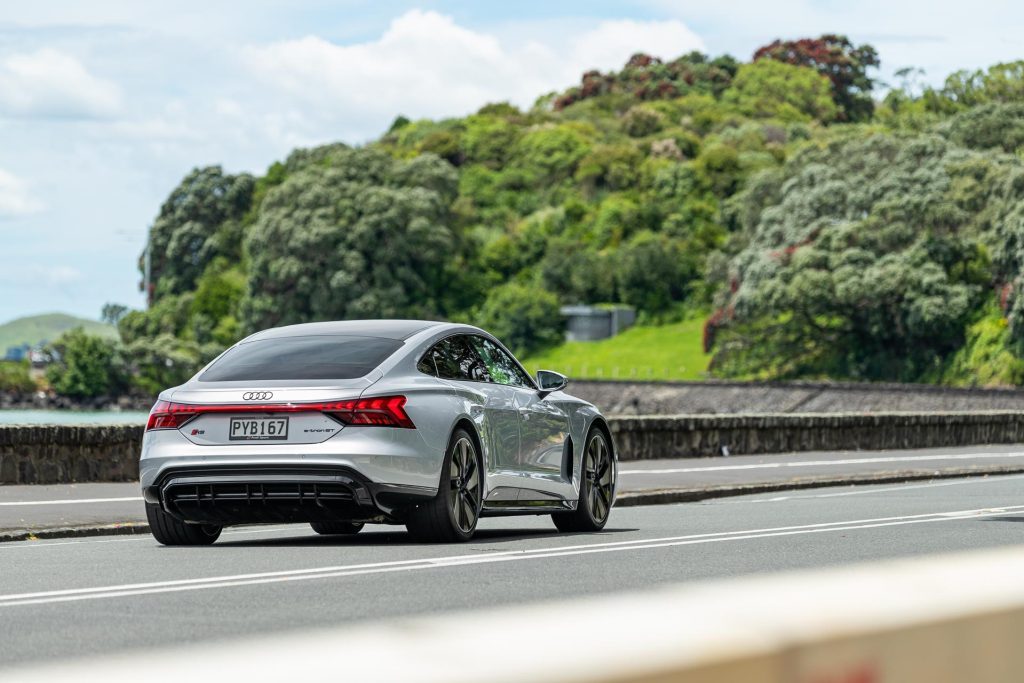
For those not so into outright performance but love the look, the ‘entry model’ is the $205,000 GT quattro. With 350kW (390kW on boost) and 630Nm, it’s still good for a 0-100km/h blast in 4.1sec.
As Louisson said originally, “if I had to own this for the rest of my days, I’d die happy”.
| Model | Audi RS e-tron GT |
| Price | $289,990 |
| Clean Car Discount | Neutral – $0 |
| Motor | Dual, 440kW/830Nm |
| Battery | 93kWh (85kWh net) |
| Range | 472km (WLTP) |
| Drivetrain | 2-speed auto, AWD |
| Energy Use | 22.5kWh/100km |
| C02 Output | 0g/km |
| 0-100km/h | 3.11sec |
| 80-120km/h | 1.75sec (50.55m) |
| 100-0km/h | 35.38m |
| Stability systems | ABS, ESP, TV |
| Safety | AEB, ACC, BSM, LDW, RCTA, ALK, AHB |
| Turning circle | 11.6m (2.25 turns) |
| Tow rating | Not rated to tow |
| Service intervals | 12 months, 30,000km |
| Warranty | 5yrs, 150,000km |
| ANCAP rating | not yet rated |
| Weight | 2347kg (claimed) |
This article first appeared in the December/January issue of NZ Autocar Magazine.


